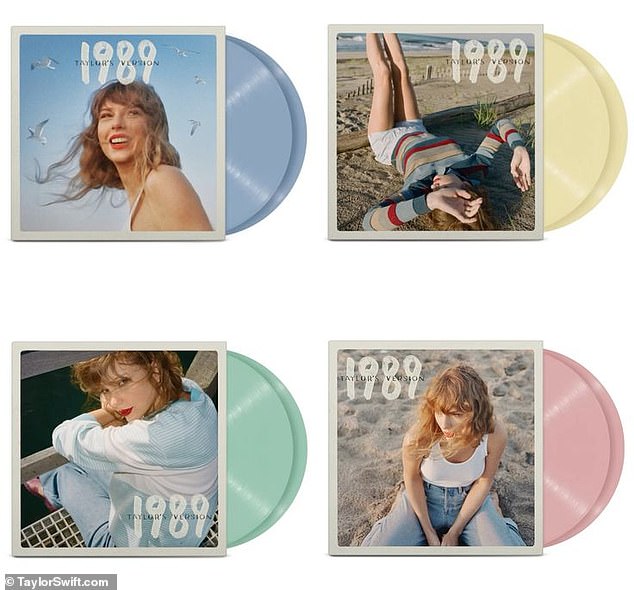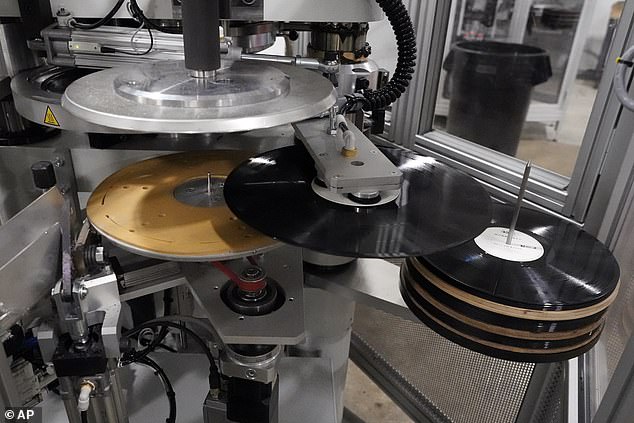Is vinyl bad for the environment? As Billie Eilish condemns musicians for ‘wasteful’ releases, experts reveal the true impact of your favorite records
Billie Eilish made headlines this week after criticizing her peers in the music industry for their “wasteful” practice of releasing numerous vinyl versions of albums to increase sales.
During an interview with Billboardthe 22-year-old Grammy winner said, “I can’t even tell you how wasteful it is.
“I find it really frustrating when someone who is really trying to be sustainable goes out of their way and tries to get everyone on my team involved in being sustainable.”
But is Billie right?
MailOnline spoke to experts to understand the real impact your favorite vinyl records have on the environment.
Billie Eilish made headlines this week after criticizing her music industry colleagues for their “wasteful” practice of releasing numerous vinyl versions of albums to increase sales.
“We live in this day and age where for some reason it’s very important for some artists to make all kinds of vinyl and packaging,” Billie said in the interview, adding that “people” “just get away with it.” ‘
While the Oscar-winning musician later said she wasn’t singling out anyone, many took this as an attack on Taylor Swift.
Swift has emerged as the unrivaled queen of vinyl sales in recent years, with sales of 3.4 million records in the US by 2023, accounting for seven percent of all sales.
For context, only 5.9 million records were sold in the whole of Britain that year, 85,000 of which were Swift’s 1989 (Taylor’s Version).
However, Swift also releases multiple variants of the same album, with different colors or cover art.
Although Eilish herself has released eight versions of her album Happier Than Ever, she claims that such practices are “really frustrating as someone who is really trying to be sustainable.”
Eilish is not alone in her concerns about the potential impact of vinyl records.
Plates are made by pressing polyvinyl chloride (PVC) pellets into grooved molds under high heat pressure.

Eilish criticized artists for releasing multiple versions of one album. Taylor Swift recently released four different color variations of 1999 (Taylor’s version) (pictured)

Billie Eilish herself has released eight different color variations of Happier Than Ever (pictured), although these are made from recycled vinyl
Alex Deninson, operations manager at The Vinyl Factory, told MailOnline: ‘Vinyl record production is an energy-intensive industry: gas to power the boiler, electricity to run the machines.
‘If a pressing plant does not run efficiently and minimize waste, vinyl record production can be extremely harmful to the environment.’
Some of the environmental impacts can be mitigated if factories use renewable energy sources in their production.
For example, Chris Roorda, CEO of DeepGrooves, which produces environmentally friendly plates, told MailOnline that their factory runs entirely on green energy.
“We use electric and green gas for heating, but as far as we know from other factories they mainly use oil,” he said.
However, Mr Roorda told MailOnline that the biggest problem comes from raw materials.
Although PVC, the material used to make vinyl records, may seem harmless, it is actually a highly polluting and toxic product.
The basic ingredients of PVC come from fossil fuels and require energy-intensive treatment with highly toxic chlorine gas to produce.
Mr Roorda explains: ‘Most harmful products from record productions mainly come from the (PVC) granulate itself.

Vinyl records require a lot of energy to press into their molds. If factories are not run efficiently, this can have high carbon costs
‘If you continuously use products from different countries, you are constantly bringing materials to your factory and therefore have a greater impact on the environment.’
A 2019 study from Keele University estimated that the production of one record required 135 grams of PVC, with a carbon footprint of approximately 0.5 kg of CO2.
That means the 55.51 million records sold in Britain and the US last year created a staggering 27.76 tonnes of CO2 from the materials alone.
This does not take into account transport, packaging or the plastic shrink film, which Mr Deninson calculates at approximately 1 kg of CO2 per record.
You might be surprised to learn that streaming music online actually comes with significant environmental costs, due to the massive amounts of electricity required to run data centers.
The same study from the University of Keele found that playing a record on a streaming service like Spotify for 17 hours produces the same amount of CO2 as a vinyl record.
Kyle Devine, an expert on the social and environmental impact of music from the University of Oslo, told MailOnline: ‘Due to the fact that the streaming industry is much bigger than the vinyl industry, streaming appears to cause the most emissions. Today.’
This means that for fans who listen to an album again and again, a record can ultimately have lower carbon costs.
As for how to make them greener, Mr Devine suggests using bioplastic, or making sheets thinner.
PVC is also a highly recyclable material, meaning that all waste can simply be ground into regrind and reused.
Similarly, when Billie Eilish released the eight different shades for Happier Than Ever, they were all produced from scrap vinyl.
Mr Deninson added: ‘Vinyl records are not a single-use product – they should last a lifetime and provide end users with a tangible physical listening experience for themselves and their children, for generations to come, as evidenced by the booming second-hand market.’
